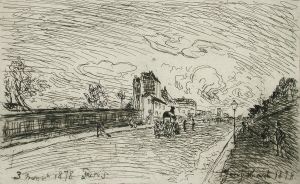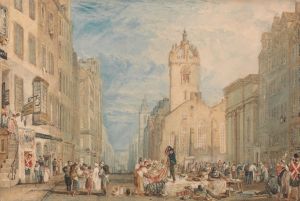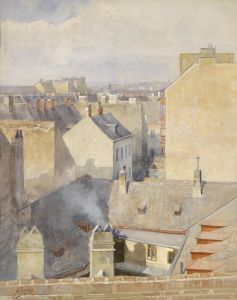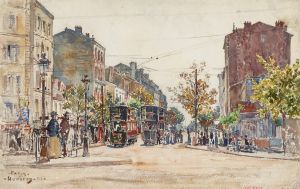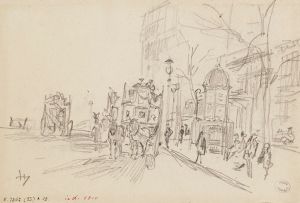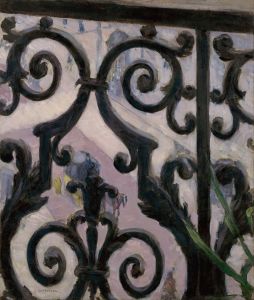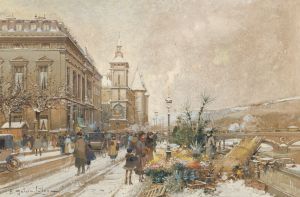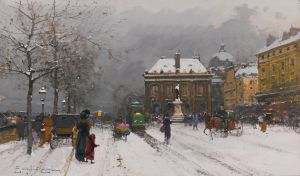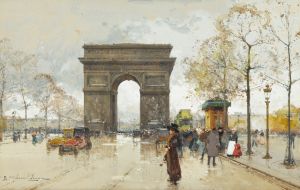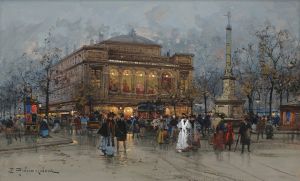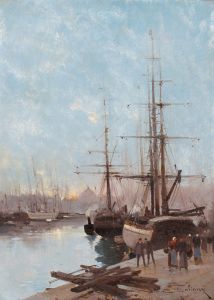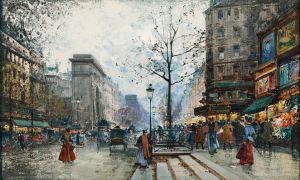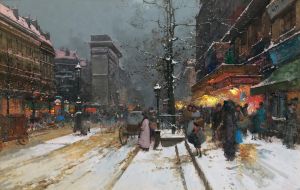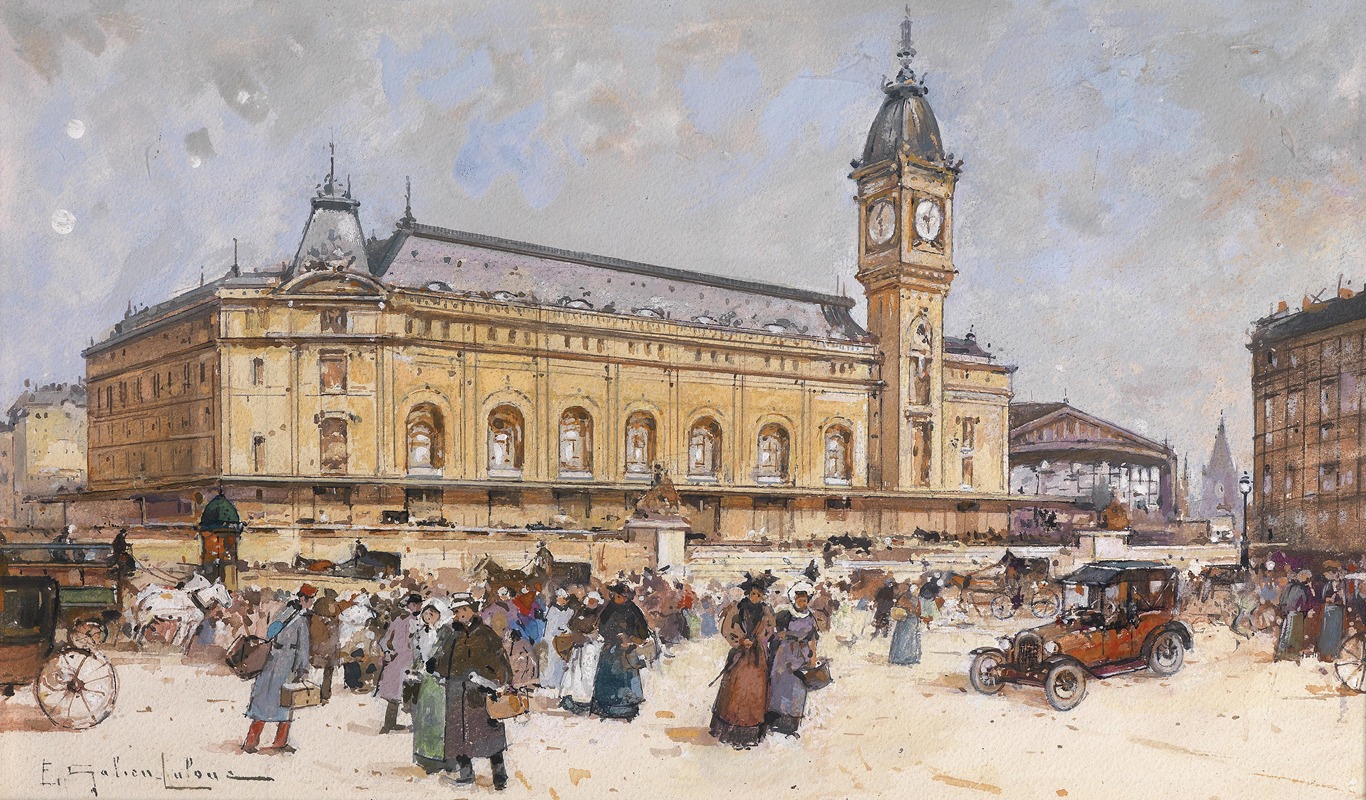
Gare de Lyon
A hand-painted replica of Eugène Galien-Laloue’s masterpiece Gare de Lyon, meticulously crafted by professional artists to capture the true essence of the original. Each piece is created with museum-quality canvas and rare mineral pigments, carefully painted by experienced artists with delicate brushstrokes and rich, layered colors to perfectly recreate the texture of the original artwork. Unlike machine-printed reproductions, this hand-painted version brings the painting to life, infused with the artist’s emotions and skill in every stroke. Whether for personal collection or home decoration, it instantly elevates the artistic atmosphere of any space.
Eugène Galien-Laloue was a French painter known for his depictions of Parisian street scenes, particularly during the late 19th and early 20th centuries. His works are celebrated for their detailed portrayal of urban life, capturing the essence of Paris with a unique blend of realism and impressionism. One of his notable works is "Gare de Lyon," which exemplifies his skill in depicting the bustling atmosphere of the city.
The painting "Gare de Lyon" showcases the iconic train station in Paris, a hub of activity and a symbol of the modern age of travel during that period. Galien-Laloue's work often focused on the vibrancy of city life, and this painting is no exception. It captures the hustle and bustle of travelers, carriages, and the architectural grandeur of the station itself. The Gare de Lyon, completed in 1900 for the Exposition Universelle, is one of Paris's major railway stations and serves as a gateway to the south of France.
Galien-Laloue's technique involved the use of gouache, a type of opaque watercolor, which allowed him to achieve a high level of detail and a luminous quality in his paintings. His palette typically included soft, muted colors that conveyed the atmospheric conditions of the city, whether it be a rainy day or the warm glow of street lamps at dusk. This approach is evident in "Gare de Lyon," where the interplay of light and shadow adds depth and life to the scene.
The artist had a unique ability to capture the everyday moments of Parisian life, making his works not only artistic achievements but also historical documents of the era. His paintings often included figures going about their daily routines, which brought a sense of realism and relatability to his work. In "Gare de Lyon," the presence of people and vehicles emphasizes the station's role as a dynamic and essential part of the city's infrastructure.
Galien-Laloue was part of a group of artists who were fascinated by the changes brought about by industrialization and urbanization. His work reflects the optimism and energy of the Belle Époque, a period characterized by cultural flourishing and technological advancements. The Gare de Lyon itself was a marvel of engineering and design, with its grand clock tower and ornate facade, symbolizing the progress and modernity of the time.
Despite his prolific output, Galien-Laloue often worked under pseudonyms, which has sometimes made it challenging to attribute his works accurately. Nevertheless, his paintings remain highly sought after by collectors and are appreciated for their historical significance and artistic merit.
In summary, Eugène Galien-Laloue's "Gare de Lyon" is a testament to his mastery in capturing the spirit of Paris during a transformative period in its history. Through his detailed and atmospheric portrayal of the Gare de Lyon, Galien-Laloue offers viewers a glimpse into the vibrant life of the city and the architectural beauty of one of its most important landmarks. His work continues to be celebrated for its ability to convey the essence of a bygone era with elegance and precision.





